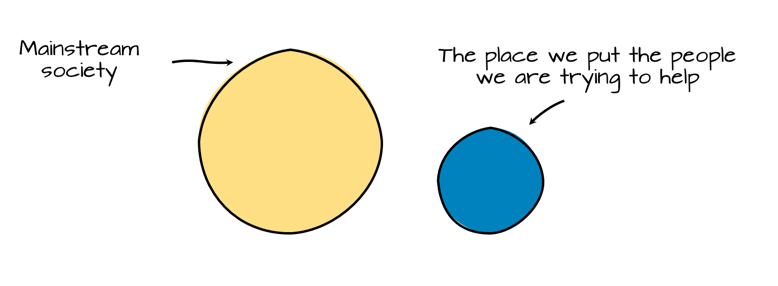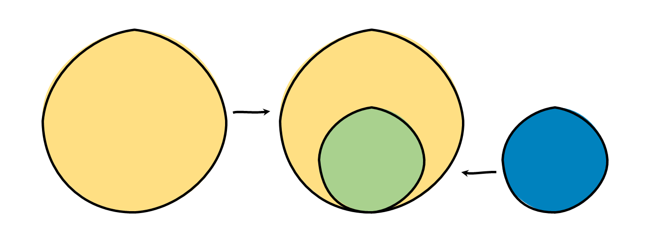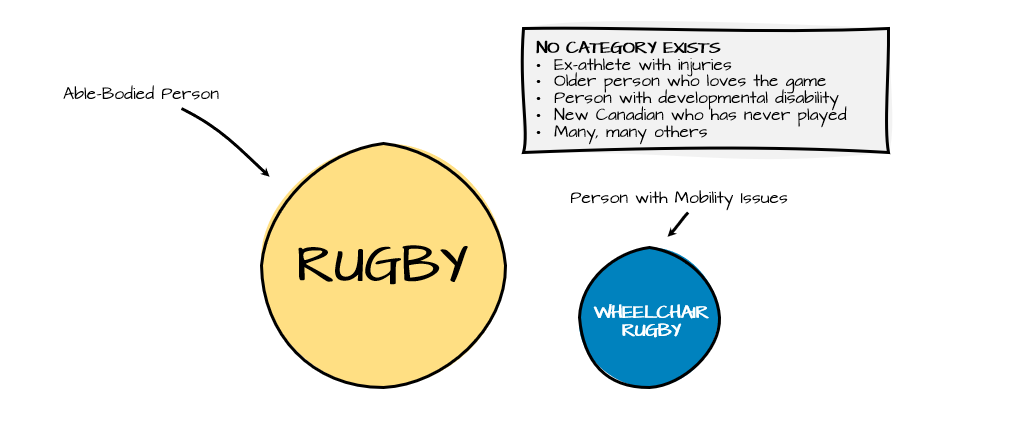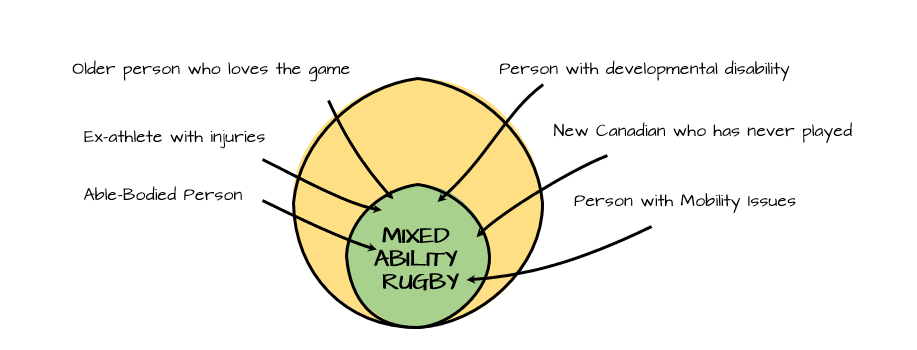A better model for inclusion
The way we think about inclusion – especially for disability – in North America is broken.
We’re more aware than ever that these challenges exist, but our pattern of execution is flawed.
Our first instinct is to go straight to a segregated model.
Sometimes this is the best approach.
But not always.
The first, and most important, rule of inclusion is to make sure those you aim to include are part of designing the solution.
When we take the time to listen and engage, we realize that the goal often isn’t to be put in the ‘other’ column.
The goal is to share the same experiences as everyone else – in a way that accommodates our needs and circumstance.
A better model for inclusion
A model that we have been pioneering in Canada – starting in the world of sports – is Mixed Ability.
The philosophy is to take the mainstream activity (e.g., Rugby) and tinker with it just enough to accommodate everyone.
The goal isn’t to create a distinct offering that only accommodates the ‘other’ group.
The goal is to create something accessible to everybody.
You might be thinking “this feels like sleight-of-hand, isn’t mixed ability just another name for the ‘other’ option”?
Imagine this real-world example:
Now look what happens when you introduce mixed ability.
Mixed ability creates an opportunity for everyone to participate regardless of their ability-level. Beyond the game, it creates an environment for people of all walks of life to connect, share, and form life-long relationships that never would be possible in a segregated model.
Applying mixed ability to the business context
Parking the societal and social benefits, there is also a very tangible business opportunity that mixed ability thinking creates.
It expands your total addressable market.
By creating a product that is accessible to a broader group of people, you’ve got a larger pool of ‘buyers’ than you could ever reach in a traditional model.
Whether you change the context to customers, employees, board members, etc. a more inclusive environment can expand your reach well-beyond your current limits.
You might think that incremental gain is small, but the reality is that ‘other’ column is far bigger than the categories we’ve been trained to consider as part of the bucket. When you consider all of the contextual reasons people may find their way into an ‘other’ column – a new mother balancing work and home life, a new immigrant learning the system, a person supporting other family members with health issues – the potential market inclusive-thinking allows you to access balloons.
So what should leaders do to better apply mixed ability thinking?
Getting started is simple, as long as you’re committed to what you find along the journey.
Engage people across your organization, and a stakeholder network who have lived experience, and go through an assessment process to understand your current strengths and weaknesses.
Identify where you want to be as an organization, and prioritize the biggest gaps that you need to fill to get there.
Empower your stakeholders with lived experience to lead the change. Get the help you need in co-designing the solution, and provide the leadership needed to drive positive change.
Remember this type of change is a journey, not a destination.
But those who go will see it’s worth the trip.
Could mixed ability thinking benefit your network? Share below!






















